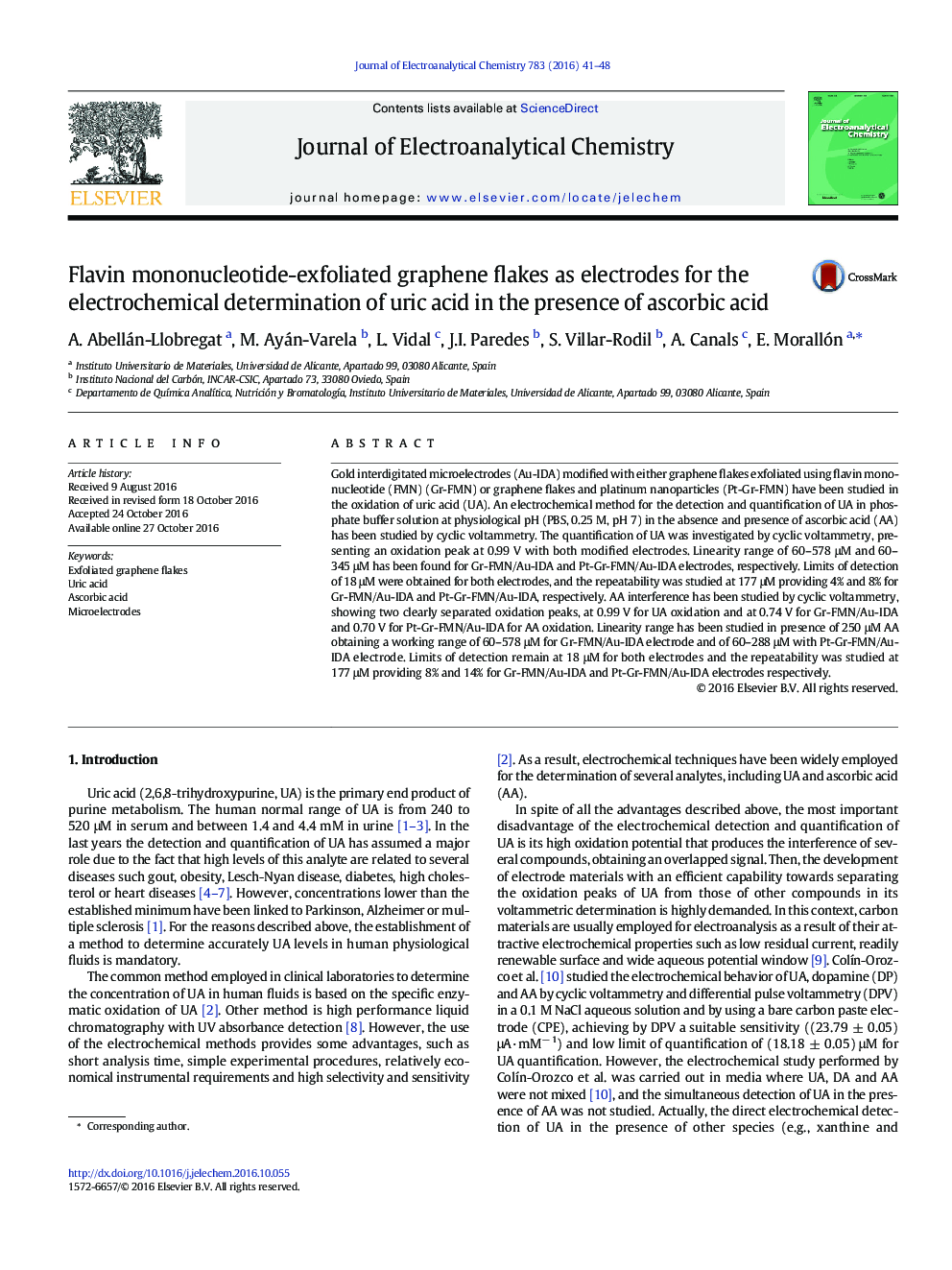| Article ID | Journal | Published Year | Pages | File Type |
|---|---|---|---|---|
| 6477054 | Journal of Electroanalytical Chemistry | 2016 | 8 Pages |
Gold interdigitated microelectrodes (Au-IDA) modified with either graphene flakes exfoliated using flavin mononucleotide (FMN) (Gr-FMN) or graphene flakes and platinum nanoparticles (Pt-Gr-FMN) have been studied in the oxidation of uric acid (UA). An electrochemical method for the detection and quantification of UA in phosphate buffer solution at physiological pH (PBS, 0.25 M, pH 7) in the absence and presence of ascorbic acid (AA) has been studied by cyclic voltammetry. The quantification of UA was investigated by cyclic voltammetry, presenting an oxidation peak at 0.99 V with both modified electrodes. Linearity range of 60-578 μM and 60-345 μM has been found for Gr-FMN/Au-IDA and Pt-Gr-FMN/Au-IDA electrodes, respectively. Limits of detection of 18 μM were obtained for both electrodes, and the repeatability was studied at 177 μM providing 4% and 8% for Gr-FMN/Au-IDA and Pt-Gr-FMN/Au-IDA, respectively. AA interference has been studied by cyclic voltammetry, showing two clearly separated oxidation peaks, at 0.99 V for UA oxidation and at 0.74 V for Gr-FMN/Au-IDA and 0.70 V for Pt-Gr-FMN/Au-IDA for AA oxidation. Linearity range has been studied in presence of 250 μM AA obtaining a working range of 60-578 μM for Gr-FMN/Au-IDA electrode and of 60-288 μM with Pt-Gr-FMN/Au-IDA electrode. Limits of detection remain at 18 μM for both electrodes and the repeatability was studied at 177 μM providing 8% and 14% for Gr-FMN/Au-IDA and Pt-Gr-FMN/Au-IDA electrodes respectively.
Graphical abstractDownload high-res image (136KB)Download full-size image
